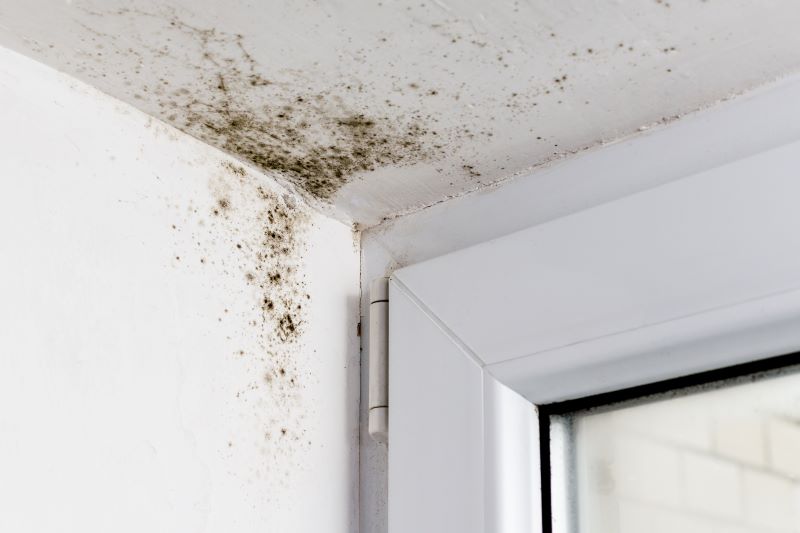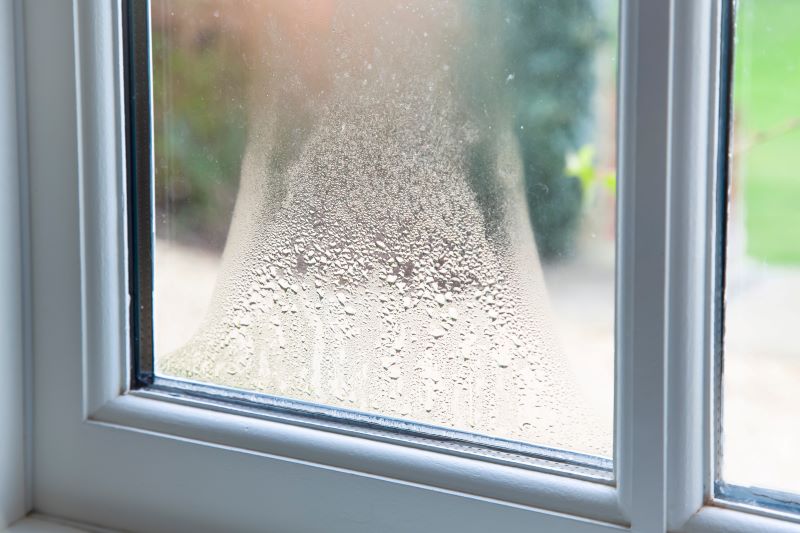How To Remedy Moisture Problems In Your Home

Your home should be one of the places wherein you can feel comfortable and safe at all times. However, if your home is experiencing any moisture issues, it might not be the best place to relax and take your mind off of things.
That is exactly when you start to think about how you can reduce the moisture problems in your house.
While moisture might seem like a minor issue, excessive moisture can develop into molds, which could cause health issues, especially if they grow intensely. Therefore, you should address any moisture problems before they turn into mold.
There are numerous ways to address the issue immediately. However, if you notice mold growth, you should consider calling a mold remediation company to remove the molds and prevent future regrowth—keeping your home clean and safe.
Furthermore, to help you prevent any mold from forming,
Below are some ways to fix any moisture problems in your home.
Checkout 5 Crucial Ways To Remedy Moisture Problems In Your Home:

Humidity control is a very crucial factor in maintaining a healthy and comfortable indoor environment. The high rate of humidity can further lead to severe moisture damage and the growth of mold, causing further health issues. On the other hand, low humidity levels can cause respiratory issues and skin irritation.
But what if I tell you 5 crucial ways that can help to prevent moisture issues in your home?
1. Check Plumbing System
When it comes to house moisture, one of the first things you should do is check your home’s plumbing system. Moisture is a result of excessive water that evaporates into your home.
Even if you don’t keep any exposed water inside your home, if you have plenty of leaks, you can still attract moisture, which could develop into potential flooding and then mold. Before the worst-case scenario happens, you should address your plumbing issues immediately.
You can begin by inspecting your home for leaky pipes by checking under your bathroom and kitchen sink. However, if your pipes aren’t exposed, you might consider hiring a plumber to inspect them. This way, you’ll have someone professional assess your pipes’ condition and see if they’re the root cause of your home’s excessive moisture.
2. Use A Dehumidifier
Sometimes, even with every precaution, there will always be excessive moisture inside your home. To keep them away from damaging your house, you should use a dehumidifier to allow your home to be within the right humidity level.
This way, you don’t have to deal too much with fixing your home, but rather, just allow your dehumidifier to do all the work for you.
When shopping for a dehumidifier, check its area coverage and see if it can work conveniently for your home. Moreover, place them in areas with excess moisture, such as your kitchen and bathroom. This should help your dehumidifier to work at its optimal level.
3. Promote Proper Ventilation
Excessive moisture develops when there’s not enough ventilation inside the room. Without this, there would be no way for the excess moisture to leave the room, thus, keeping your room’s humidity levels high.
To prevent this, you should ensure that you promote proper ventilation inside your home, ideally in the bathroom and kitchen, as these areas are highly susceptible to moisture.
You can begin by installing a vent in your kitchen and bathroom. You can automatically open the vents in the bathroom every time you turn on the lights. For your kitchen, install a range that effectively removes any smoke away from your home. You can always open your windows for a cost-efficient solution, especially during hot days.
4. Weatherstrip Your Doors And Windows
Apart from your pipes, your house could get excessive water from rain. While they’re generally outside your home, some droplets might enter your home, causing moisture to build up inside your home.
Even if they’re not causing any flood inside your home, the moment you notice that rain is making its way inside your home, you should address the issue immediately by weatherstripping your doors and windows.
It’s an effective way to prevent any excess moisture and rainwater from entering, keeping your home dry and humid. You can easily purchase weatherstrips at your local store and install them yourself to avoid any professional fees.
5. Divert Excess Water Away From Your Home
Aside from rainwater coming inside your home through your doors and windows, there are plenty of other ways where external water can enter, causing excessive moisture. To keep your home dry and humid, you should look outside of your home and find ways to divert excess water away from it.
If your roof still has no gutters, you should begin installing one to prevent any rainfall from directly falling on your ground. You can redirect water away with gutters and send them directly to the drain.
Moreover, you should also check your AC’s drain pipe and ensure that you keep condensation away from your home. While they might only produce a few droplets, they can still affect your home negatively, especially when they’re making too much during the day.
Additional 12 Ways To Remedy Moisture Problems In Your Home
Here are 12 ways to fight moisture issues within your home, not including the most obvious solutions:
Low-VOC Paints and Sealants
Traditional paints and sealants often emit volatile organic compounds, which can make walls trap moisture. Instead, use low-VOC or zero-VOC products that allow the walls to “breathe” better and reduce moisture buildup, which can eventually lead to mold growth.
Prioritize Natural Materials
Whenever possible, incorporate natural materials like wood, stone, and cotton into your home’s construction and furnishings. These materials are more breathable than synthetic ones, helping to regulate moisture levels.
Cook Smart
Cooking releases a lot of moisture into the air. Use range hoods effectively during cooking and ensure proper ventilation in your kitchen to minimize moisture buildup.
Mindful Plant Placement
While houseplants add life to your home, overwatering them causes increased humidity. Thus, try to go for those that bloom in low-humidity climates and avoid overwatering them.
Consider a Whole-House Fan
A whole-house fan can greatly enhance airflow, pulling out stagnant, moist air and bringing in fresh, dry air.
Upgrade to Energy-Efficient Appliances
Modern appliances, particularly dishwashers and clothes dryers, often release a surprising amount of moisture. Consider upgrading to energy-efficient models with improved moisture-removal features.
Invest in Moisture-Absorbing Materials
Utilize natural moisture-absorbing materials like bamboo flooring, cork tiles, and wool rugs to help regulate humidity levels within your home.
Regulate Shower Steam
Put an efficient exhaust fan in the bathroom, ensuring it’s on during showers to clear off steam and avoid moisture buildup.
Dry Clothes Strategically
Avoid drying clothes indoors whenever possible. Utilize a clothesline or dryer vent to the outdoors. If indoor drying is necessary, ensure proper ventilation to minimize moisture release.
Monitor Indoor Humidity Levels
Invest in a hygrometer to monitor indoor humidity levels. This will help you identify potential problems early on and adjust your home’s environment accordingly.
Address Roof and Gutter Issues Promptly:
Ensure that the roof is properly sealed, and gutters are correctly functioning to prevent water damage and leakage that is a base for moisture problems.
Take a Holistic Perspective:
Remember that moisture problems most often have multiple causes. Think holistically to treat the most likely problems from all those angles: through ventilation, using moisture-absorbing materials, and making mindful home décor choices.
Apply these tips, and you’ll be ready to fight that moisture-related problem in your house—providing yourself with a healthier environment to live in.
Long-Term Maintenance Tips
To remedy the moisture problems in your house, you must focus on proper ventilation. For this, you can use exhaust fans in your bathroom and kitchen. You must also focus on the leaks and cracks in your foundation.
On the other hand, you can also address the issues in the crawl spaces and regularly check for signs of water damage. You can also use a dehumidifier when it is necessary.
In the next section, I will provide you with the key strategies for long-term maintenance tips:
Ventilation: Try to install and then regularly clean the exhaust fans in your kitchen and bathrooms. This way, you can easily remove the moisture directly outdoors. Always ensure that your windows are open, especially when the weather permits you fresh air circulation.
Leak detection and repair: Try to inspect your roof, gutter, and foundation. Look for leaks and cracks. If you can spot any leaks, try to address them to prevent water infiltration.
Crawl scape management: Always ensure that the cracks and openings are well sealed in your crawl space foundation. You can install a vapor barrier, which can further prevent moisture from rising from the ground.
Insulation: Try to insulate your walls and attics properly. This can help you to prevent condensation on cold surfaces.
Preventive measurements: Regularly inspect your home and look for signs of moisture damage. This would include water stains, mold growth, and peeling paint.
Final Takeaway
Dealing with moisture problems inside your home can really be exhausting. Not only that it can lead to mold development, but it can also make your home feel uncomfortable and hot as there’s too much moisture going in.
To remove it, you should begin by using a dehumidifier, keeping any excess water away from your home, and checking for any leaky pipes. While the process might be lengthy, the benefits of a moisture-free home would be worth it.
Read Also:











Leave A Reply